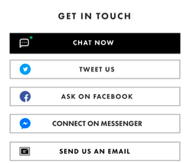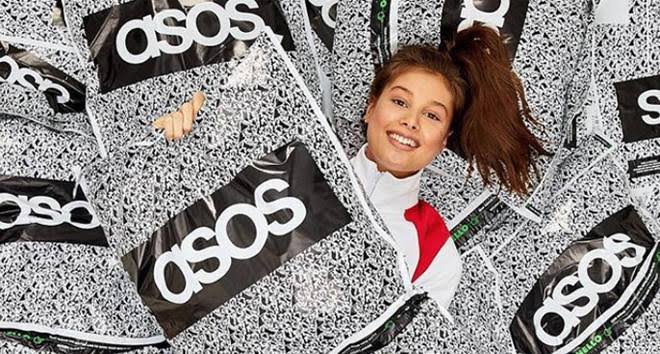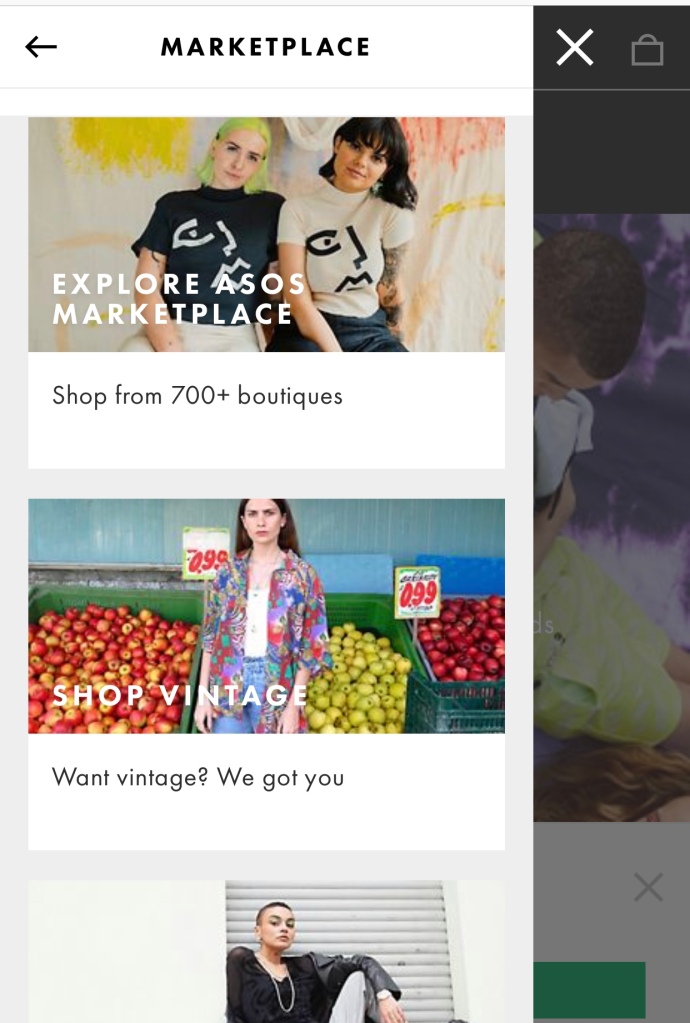BUSINESS MODEL
What is a Business model? ‘It is the company’s plan for making a profit’ (Kopp, 2019) It will identify all aspect of the business, identifying the products the business wishes to sell, its target markets and any expenses involved.

ASOS is one of the biggest leading online retail stores, which was launched in 2000 (Kollewe, 2014). A UK based company, that sells clothing for men and women, providing ‘fashion lovers’ with the newest styles. ASOS has a multi-sided business model which focuses on the overall customer experience. ASOS main channel is its website, also allowing customers to make purchases from its app on their mobile. ASOS has four main factors that influence the business ongoing success; proposition, product, people and purpose (ASOS, 2019)
ASOS VISION
The world’s number one fashion destination for twenty-somethings
Customer Segments
ASOS divides its customer base into two groups which are both necessary in order for the business to operate:
Consumers: Individuals who want to purchase the latest fashion trends Fashion companies: Retailers that produce fashion and need buyers
There is also a small target market within the online business model which specifically targets people in their twenties.
(ASOS, 2019)
“We create and curate products and experiences that inspire fashion-loving 20-somethings“
Value Proposition
This term refers to the value a company promises to deliver to customers should they choose to buy their product. The question ASOS may ask themselves is ‘Why should the customer buy from you?’. ASOS uses personalization, customization and convenience as its value proposition to ultimately meet the needs and wants of the customer.
Accessibility: ASOS is accessible to the widest possible audience. They offer clothing for various body sizes with retail lines such as, Petite, Tall, ASOS Curve & Plus size, maternity. They also have category called ‘Marketplace’ which includes 50,000 boutique fashion items from more than 700+ boutiques across 40 countries (Cleverism, 2019) ASOS allows consumers to access product items that may not be able to access from physical stores.
Customization: They alter their site, products & services according to the needs and wants of the customer. ASOS customizes its website, planning and buying strategies to target different countries. For example, they may release a winter collection in Australia before other countries.
Convenience: ASOS provides convenience for all customers. The next-day delivery option to numerous countries as well as express delivery option for smaller countries. They also send regular updates on the delivery of your product. So, like myself you can know when your product will arrive and can stop asking the question ‘Where is my product!?’. Finally, their mobile app provides great convenience as it offers product recommendations.
Customer Relationship
ASOS’s relationship with its customers exists mostly through its website and app. There is limited opportunity for face to face interaction between customers and employees because ASOS is an online company. ASOS reaches out to customers in the community by sending magazines and sending emails to customers. If customers want to contact ASOS directly, they can do so through email or social media, or alternatively get in contact via the 24/7 phone support service ASOS offers.

Key Activities
ASOS’s business model involves building and maintain their digital platform between their two interdependent groups; consumers and fashion companies. Maintenance of their websites and apps. Also involves searching for new brands to reference and add. Organization and planning to process delivery of the product and manage returns from customers. Communication with its consumers via email, Facebook, Instagram etc.

Key Partners
ASOS is involved with numerous partners to influence the success of the business. Fashion brands, designers and ambassadors are all partnered with ASOS.
Key Resources
ASOS main resources are the developers and IT engineers. As well as supply chain managers, and its collection of facilities which include warehouses worldwide. ASOS also relies heavily on their 1,300 customer care employees to provide support for customers (ASOS Careers, 2019)
REVENUE MODEL
How does ASOS make their money? At the end of 2018, ASOS had made a profit of $134.5million before tax, which is a 28% increase from 2017 (Clark, 2018)

ASOS revenue model includes the following:
Product Revenue
ASOS generates revenue from selling its private label products
Usage Fee
ASOS charges approximately rental fee of $35 per month to vendors using their website
Transaction Revenue
ASOS generate revenue through charging transaction fee and receives commission. This revenue is generated by claiming 20% commission off every sale made by vendors through their website.
Advertising Revenue
Firms offer products and ASOS provides the platform for advertising in return for advertising fee. Through use of third-party advertising on ASOS website and magazine, the company automatically makes an income from fees charged.
ASOS international strategy included delivering its services to 237 countries and territories. By expanding their customer base, they have driven sales up. International sales (Yes that’s us, Australia) went up 22% in a year (Kulach, 2019)

References
ASOS (2019). Women’s Clothes | Shop Women’s Fashion | ASOS. [online] Available at: https://www.asos.com/au/women/ [Accessed 4 Sep. 2019].
ASOS. Available at: https://www.asos.com/au/women/ [Accessed 4 Sep. 2019].
ASOS Careers (2019). ASOS Careers. [online] Asoscareers.asos.com. Available at: https://asoscareers.asos.com/ASOS/BusinessAreasJobs/CustomerCare.html [Accessed 3 Sep. 2019].
Clark, A. (2018). ASOS revenue, profit rise, guidance backed. [online] MarketWatch. Available at: https://www.marketwatch.com/story/asos-revenue-profit-rise-guidance-backed-2018-10-17 [Accessed 3 Sep. 2019].
Cleverism (2019). Company ASOS | Cleverism.com. [online] Cleverism. Available at: https://www.cleverism.com/company/asos/ [Accessed 3 Sep. 2019].
Kollewe, J. (2014). Asos timeline: from tiny startup to dressing Michelle Obama. [online] The Guardian. Available at: https://www.theguardian.com/business/2014/jun/05/asos-timeline-startup-michelle-obama [Accessed 3 Sep. 2019].
Kopp, C. (2019). Understanding Business Models. [online] Investopedia. Available at: https://www.investopedia.com/terms/b/businessmodel.asp [Accessed 3 Sep. 2019].
Kulach, K. (2019). What turned ASOS online store into a global ecommerce giant?. [online] Webinterpret. Available at: https://www.webinterpret.com/au/blog/asos-online-store-global-ecommerce-success/ [Accessed 3 Sep. 2019].
Mor, N. (2019). Revenue attribution overview. [online] Help Center. Available at: https://support.appsflyer.com/hc/en-us/articles/360001546009-Revenue-attribution-overview [Accessed 4 Sep. 2019].


Very informative! Great read that highlights their business and marketing aim.
LikeLike
Thankyou so much for finding me via Instagram and for your feedback!
LikeLike
This was so in-depth Sarah! Congratulations on a beautiful post! Love it!
LikeLike
What a great blog on ASOS very informative!
LikeLiked by 1 person
Thankyou so much!
LikeLiked by 1 person